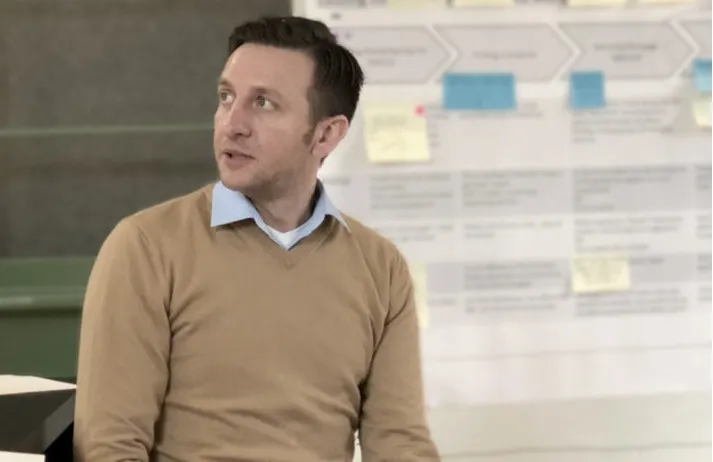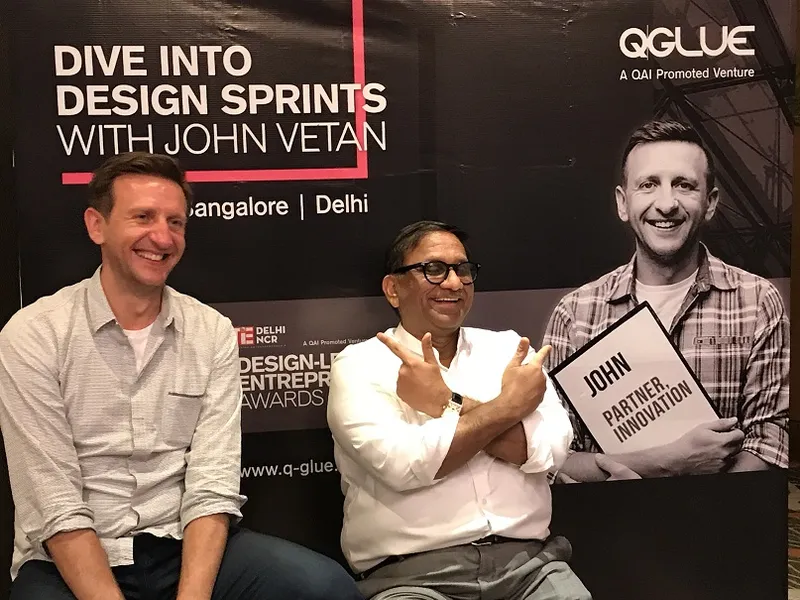Failure lessons: how to make sure your design sprint delivers proper prototypes
John Vetan of Design Sprint Academy offers frameworks and tips on how to effectively validate prototypes of products and services.

Flawed design processes and assumptions can lead to faulty products or services, thus increasing customer pain-points rather than solving them. Methods and frameworks like agile, scrum, lean and design thinking have emerged to tackle some of these issues. See for example my ‘8 Is’ framework of design thinking for startups (intent, insights, immersion, interaction, ideation, integration, iteration and intensification).
Design is a broadly-used term and applies to product, service, vision statements, brand, process, campaign kickoffs and even moonshot projects. Success in the digital era is strongly dependent on the kind of satisfaction that the web or app can deliver to customers to solve their pain-points.
“Design sprints help validate solutions before launching costly and high-profile product development,” explains John Vetan, Innovation Strategist and Founder of Design Sprint Academy (DSA). Organised by QGlue, two workshops held recently in Bengaluru and Delhi by DSA highlighted success factors for effective design.
“Innovation should not be treated as a buzzword, it should be embedded in the DNA of organisations ranging from startups to large enterprises,” said John, in a chat with YourStory. John is also a mentor at accelerator Techstars (see our Startup Hatch profile of Techstars in India).
John defines a design sprint as a human-centred process to solve a real problem. It is a phased activity for validating ideas and solving big challenges. Spread across two to five days, the phases are understand, ideate, decide, prototype, test, and iterate. Effective design sprints have a good mix of roles: product managers, researchers, UX designers, process owners, developers, marketers, financiers, coaches and facilitators.
Design sprints are regularly used by companies as varied as Microsoft, NASA, Slack, Uber and Amazon. With offices in 15 cities in the US and Europe, DSA offers workshops on problem framing, design sprints, and sprint facilitation. Its clients include the likes of Google, HSBC, Rovio, Springer, and Experian.
Based on their extensive experience, DSA has also identified a number of types of failure that can occur if the design sprint process is not properly followed. Here are some ways of identifying these challenges, which will be useful for startups in their frequent designs and pivots.
Phase 1: Understand
This phase consists of activities like lightning talks, long-term goals, sprint questions, and customer journey map. Having a clearly agreed-upon goal helps with alignment, buy-in, inspiration and focus.
Examples of such goals include “Provide the best personal gift recommendation source in order to make buyer and recipient happy,” or “Make the mortgage process hassle free, better for consumers and cheaper to deliver,” or “Become a recognisable and profitable lifestyle brand that transforms women’s lives.”
A customer journey map should list out the steps in the customer’s activities, along with paint points for each, eg. difficulty in choosing a gift, lack of clarity in knowing when it will be delivered.
Causes of failure in this step include lack of understanding of roles of the participants, too many or too few steps in the customer journey map, or steps which are very generic and don’t convey concrete meaning.
Phase II: Ideate
This phase includes lightning demos and sketches of ideas. It involves research and collecting ideas from outside. Participants sketch out their solutions using doodles or ‘Crazy 8s’ (eight variations in eight minutes). The sketches should map out customer interaction points, and show a diverse range of solutions.
In later stages, the prototype will be one of these proposed solutions, or a combination of some of them. However, prematurely finalising a prototype at this stage can lead to errors if the subsequent phases of decision and testing are not carried out.
Phase III: Decide
Activities and exhibits here include art museum, decision and storyboard. This is where activity and exhibit design play an important role – how to effectively capture inputs and decisions in a manner that is easy to visualise and understand by the team members and even outsiders.
Flipcharts, post-its, stickers, colour pens, and highlighters are the most commonly used objects in design sprints. Designers help with quick and intuitive drawings and charts, though every participant needs to sketch out their activities.
For example, coloured dots can be used by each member to rank and rate different proposed features, thus creating a heat map. DSA jokingly calls this process “dotmocracy.” The storyboard will ultimately consist of about 10-15 panels woven together into a cohesive story. It should be understood by everybody, and capture many layers of meaning.
Causes of failure here are endless discussion, unfocussed debate, continuous adding of new features to the storyboard, lack of detail, or even settling on the safest solution instead of a bold but innovative one.
Phase IV: Prototype
Based on the final storyboard, a prototype is designed that must be realistic enough, and yet contain just enough utility to be a source of future learning. “It doesn’t have to be perfect, but it must have the user in mind,” advises John.
Causes of failure here are lack of time awareness, inadequate status checks, adding of new features not discussed earlier, focus on irrelevant details, and lack of role clarity.
Phase V: Test
In this phase, the prototype is tested with real end-users. In-depth interviews are conducted and recorded for future analysis and learning. The aim is to ultimately validate (or invalidate) a concept, and find out what may not be working and why.
At this stage, you need to test only with five users, advises John; this alone can surface up to 85 percent of usability problems. The aim is not to document every single weakness, but find some ways to improve the basic design.
Failures in this crucial stage can arise from biased or leading questions for the customers, or not checking the recording system while conducting the interview.
Even at a larger level, after one round of the sprint is complete and before iteration, it is important to capture post-sprint documentation for future analysis by the same team and other teams. The recommendations and best practices should also be evaluated and used in subsequent rounds.
In sum, the design sprint process can be exhausting, though exhilarating. Participants can go through a wide range of emotions: confusion, denial, excitement, argumentation, pressure, pride, relief, and inspiration. An attitude of “learn fast, fail fast, kill early prototypes” helps in progressing to a solution, advises John.
Team members should also be willing to find the balance between speaking up and listening quietly, and even switching perspectives. Having clarity on the roles of facilitator and decider will help break deadlock and move on to a solution that is satisfactory to all.
“Ventures in India need to adopt design thinking and create the designer mindset amongst their teams, especially the founders. Design-led approaches along with the lean startup and agile methods will go a long way in creating relevant innovation. They will allow fail fast and learn fast scenarios, enable an early product- market fit before cash runs out, and create extraordinary customer experiences, and not just be tech-led,” says Navyug Mohnot, Founder of QGLUE.
“I have seen too many great ideas and teams running out of runway and falling off the cliff. We need to arrest that fast and create more success stories. Design thinking is a must,” he sums up.








